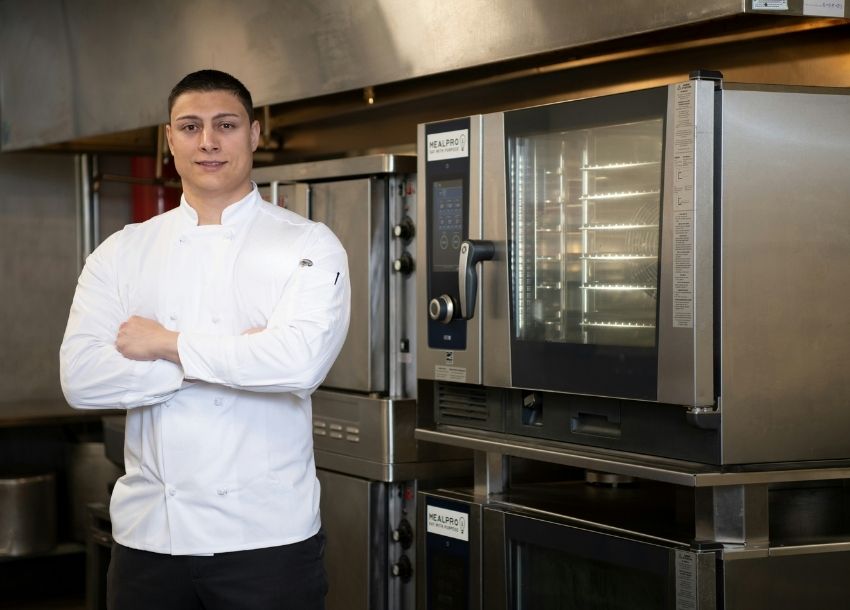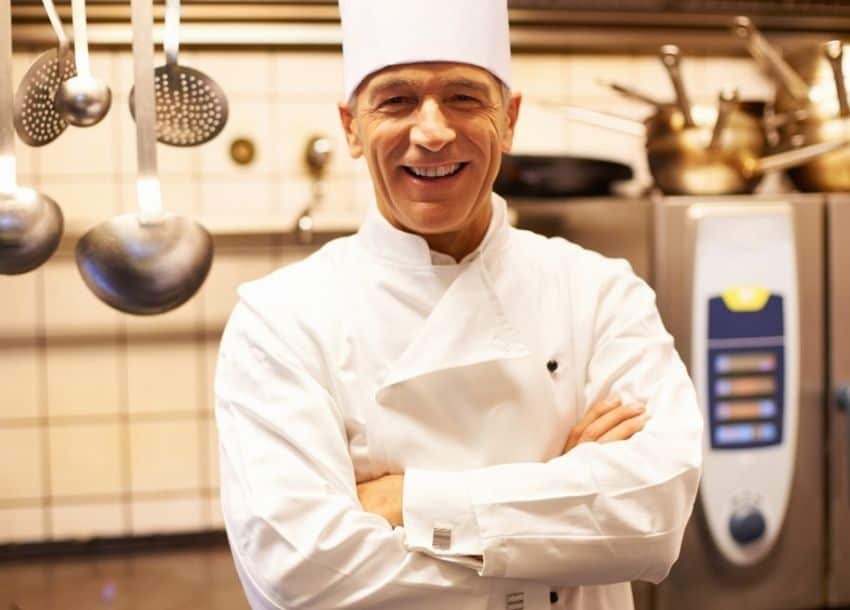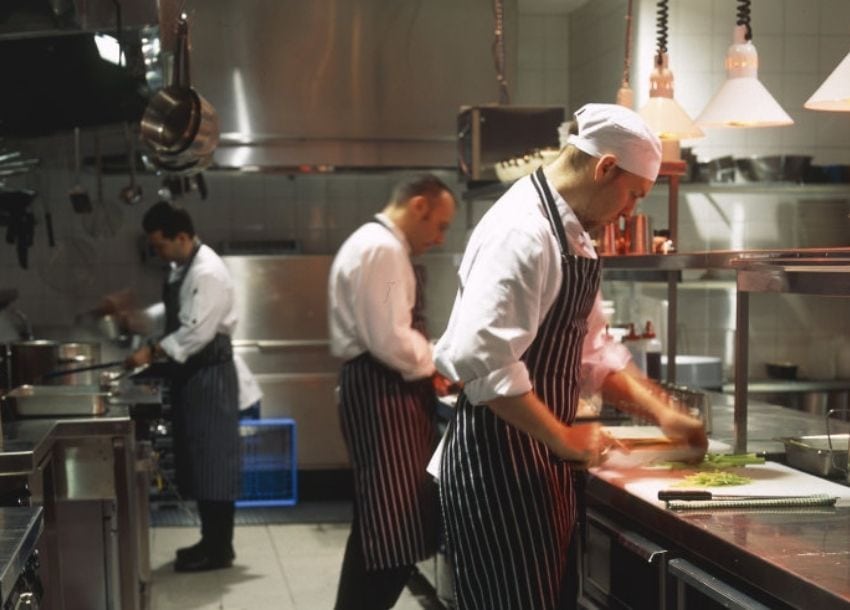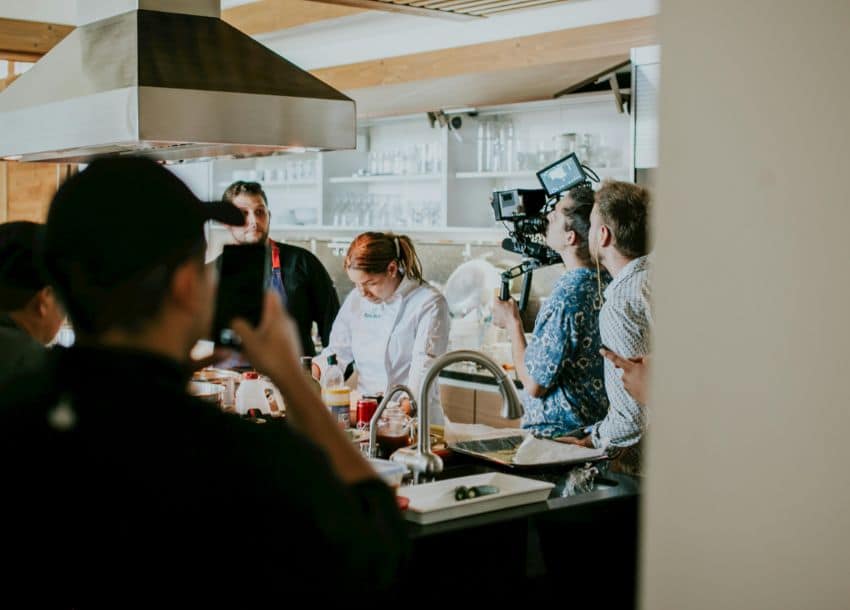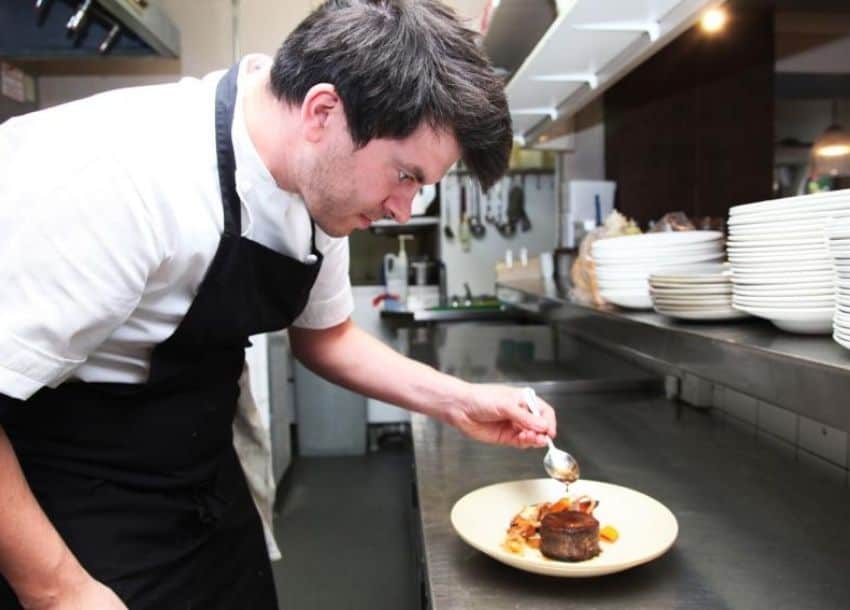Sous Chef Interview Questions for Hospitality Employers
- Recruit
- Sep 12
- Share post
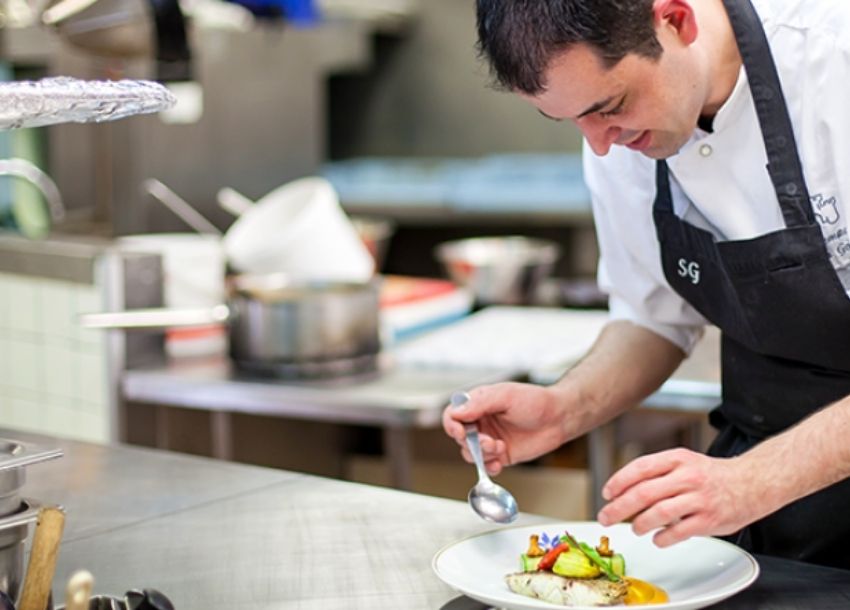
Hiring the right candidate starts with asking the right sous chef interview questions. Finding a sous chef isn’t just about someone who can cook – you need leadership, calm under pressure, and someone who fits your kitchen’s rhythm. Whether you run a fine-dining restaurant or a fast-paced bistro, asking targeted questions is how you identify the real pros.
This guide gives you chef-specific interview questions, real sample answers and tips on what to look for – all tailored to hospitality kitchens.
Key Sous Chef interview questions and what to listen for
Use the below sample questions and answers to help shape your next sous chef interview.
Tell me about a time you had to lead a team during a tough service?
Look for: Leadership, calm under pressure, ability to delegate.
Good answer: “I reorganised the workflow mid-service, supported weaker sections and ensured service stayed on track.”
Red flag: Blaming others or vague answers like “I just worked harder.”
How do you handle feedback – both giving and receiving?
Look for: Emotional intelligence, openness to learning, constructive feedback style.
Good answer: “I take feedback on board without defensiveness and give clear, specific feedback to my team post-shift.”
Red flag: Defensive attitude, dismissing feedback, or only mentioning giving, not receiving it.
What’s your approach to maintaining kitchen standards during a busy shift?
Look for: Structured thinking, prioritisation, commitment to quality.
Good answer: “I delegate tasks, double-check key quality points, and communicate with FOH so nothing gets missed.”
Red flag: “I just push harder” or cutting corners on hygiene and quality.
Describe a time you clashed with another team member. What did you do?
Look for: Accountability, conflict resolution, professionalism.
Good answer: “I pulled them aside post-service, discussed the issue calmly and agreed a better way to work together.”
Red flag: Blame-heavy responses or saying “I avoid conflict” with no example.
How do you train or onboard new kitchen staff?
Look for: Mentoring style, structured approach, patience.
Good answer: “I pair them with me for shadow shifts, give clear task lists and check in mid-shift for feedback.”
Red flag: “I don’t have time to train” or lack of clear examples.
What’s your role in managing food waste and cost control?
Look for: Financial awareness, portion management, efficient prep.
Good answer: “I monitor stock rotation daily, use cross-utilisation and train juniors to portion correctly.”
Red flag: Treating waste control as solely the Head Chef’s responsibility.
How do you balance speed and quality during peak times?
Look for: Forward planning, leadership, quality mindset.
Good answer: “I prep heavily before service, call clear instructions on the pass and set the pace by example.”
Red flag: Suggesting quality always suffers in busy periods.
Bonus Sous Chef interview questions
Use these additional questions to further explore a candidates suitability for the role you are hiring for.
How do you support the Head Chef in balancing creativity with profitability?
Look for: Menu costing, awareness of financial impact, creative control.
Good answer: “I monitor costs closely and suggest seasonal swaps that save money without compromising creativity.”
Red flag: Dismissing cost control as “not my job.”
What’s your approach to motivating a large brigade across multiple sections?
Look for: Leadership at scale, communication systems, morale-boosting strategies.
Good answer: “I set section goals, rotate juniors for variety and hold short pre-shift briefings.”
Red flag: Only motivating through discipline or fear.
How do you handle supplier negotiations and stock shortages?
Look for: Relationship-building, adaptability, problem-solving.
Good answer: “I keep backup suppliers and train staff to adjust recipes without losing quality.”
Red flag: Passing blame to suppliers without proactive solutions.
What role do you play in developing junior leaders (CDPs and Junior Sous)?
Look for: Mentorship, long-term staff development.
Good answer: “I assign them leadership tasks on quiet nights and give structured feedback.”
Red flag: No process for mentoring future leaders.
How do you align your kitchen’s goals with the wider business strategy?
Look for: Commercial mindset, big-picture thinking.
Good answer: “I regularly meet with FOH and owners to ensure menus, costs and guest experience align.”
Red flag: Narrow focus only on the kitchen.

Bonus: Junior Sous Chef interview questions:
What makes you ready to step up from CDP to Junior Sous Chef?
Look for: Awareness of responsibility, leadership signs.
Good answer: “I’ve already trained commis, managed sections during service and feel ready to take more ownership.”
Red flag: Lack of clear examples.
How do you support the Sous Chef during service?
Look for: Initiative, teamwork, leadership readiness.
Good answer: “I anticipate issues, jump in on weak sections and check in regularly with the pass.”
Red flag: Only referencing their own section.
What’s your experience managing mise en place for your section and others?
Look for: Prep discipline, organisation.
Good answer: “I set up my own mise, check adjacent sections and help reset before the next shift.”
Red flag: “I only manage my prep.”
How do you handle feedback from the Sous or Head Chef?
Look for: Growth mindset, coachability.
Good answer: “I adjust mid-service if needed, then ask questions after to avoid repeating mistakes.”
Red flag: Defensiveness or blame-shifting.
What are your long-term career goals in the kitchen?
Look for: Ambition, commitment, realistic expectations.
Good answer: “I want to progress to Sous in the next 2 years and eventually Head Chef, building experience steadily.”
Red flag: “I haven’t thought about it.”
Help candidates use the STAR method
Encourage structured answers using STAR:
- Situation – context of the example.
- Task – what needed doing.
- Action – what they did.
- Result – the outcome.
Sous chef interview questions – how to score responses
Use a 1–5 scale to rate candidates on:
- Relevance to the role.
- Clarity and structure.
- Initiative shown.
- Outcome quality.
Final thoughts
While behavioural, cultural and technical questions are essential, remember to observe your candidate’s body language, curiosity and professionalism. Don’t be afraid to ask follow-ups – they reveal deeper insights into mindset.
If your venue allows, a trial shift or kitchen walkthrough can help confirm what you’ve heard in the interview.
Finally, keep detailed notes. They’ll help you compare candidates fairly and make onboarding smoother when you know their strengths from the start. Remember, you’re hiring someone who will likely run your kitchen when you’re offsite. A thoughtful, structured interview will save you countless headaches, and help you find a sous chef who elevates the whole brigade.
–
FAQs
How many sous chef interview questions should I ask?
Aim for 5–7 strong behavioural questions plus follow-ups. Add 1–2 role-specific questions for executive or junior sous roles.
Should I combine interviews with a trial shift?
Yes. Interviews reveal mindset; trial shifts show execution. Always pair the two.
Can technical tests replace interviews?
No. Pastry demos or butchery tests show skill, but you also need to gauge leadership, resilience and fit.
How do I adapt interview questions for small venues?
Focus less on financials, more on multitasking and flexibility across sections.
Are Sous Chef interview questions different in hotels vs. restaurants?
Hotels often emphasise volume and teamwork across outlets; restaurants focus on creativity and service pace.
Comments
Add a comment
Leave a Reply · Cancel reply
You must be logged in to post a comment.

